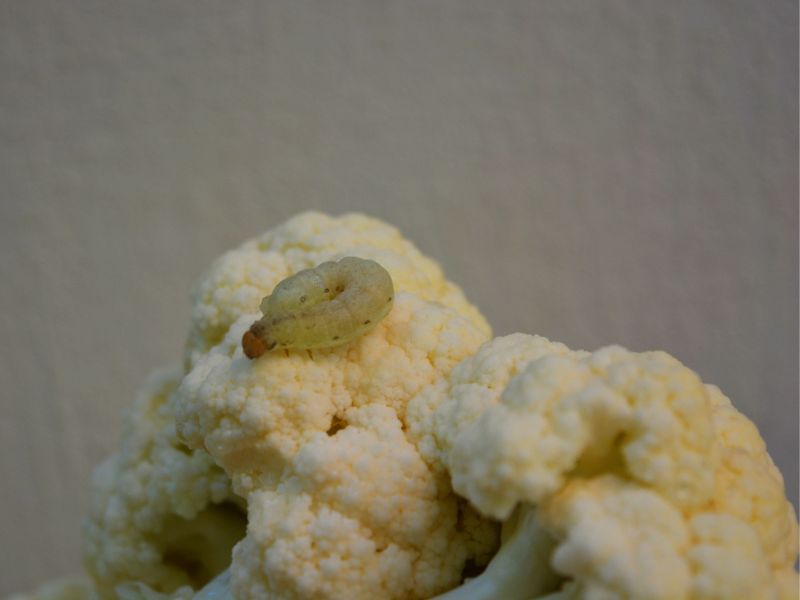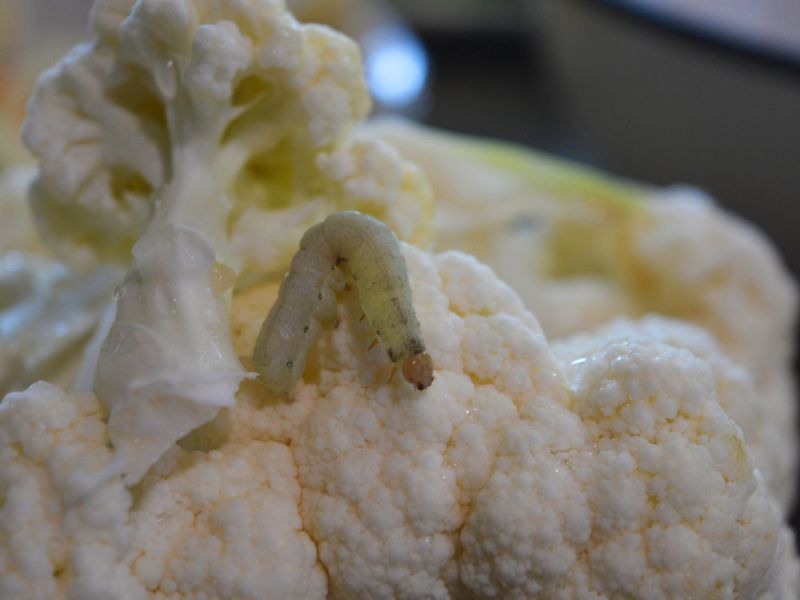Cauliflower, a versatile and nutritious vegetable, has gained popularity recently for its use in low-carb and gluten-free diets. However, it’s common to come across a cauliflower head with dark spots or blemishes, leaving many wondering whether these imperfections are safe to eat.
The Nature Of Dark Spots
The good news is that, in most cases, dark spots on cauliflower are perfectly safe to eat. These spots, which can range from light brown to almost black, are often superficial and don’t affect the overall quality or flavor of the vegetable. They may appear as specks or larger patches on the surface of the cauliflower head.

Image Credit: Shutterstock/Daria Katiukha
Sunlight Exposure
One common cause of dark spots on cauliflower is exposure to sunlight. When cauliflower grows in the field, the leaves surrounding the head can sometimes fail to cover it completely. This exposure to direct sunlight can lead to the development of pigmented spots. While these spots may not be visually appealing, they do not indicate harm or spoilage.
Age And Handling Factors
Another reason for dark spots on cauliflower can be age or handling. As cauliflower ages or experiences minor damage during harvesting and transportation, it can develop these spots. They are often the result of minor bruises or abrasions on the surface of the vegetable.

Image Credit: Shutterstock/Daria Katiukha
Selecting The Best Cauliflower
Examining the head before purchasing is a good idea to ensure you consume the healthiest and freshest cauliflower possible. Look for cauliflower that is firm, compact, and has minimal dark spots. If you find a cauliflower with dark spots, you can trim away the affected areas, and the rest of the vegetables should be perfectly fine to use in your recipes.